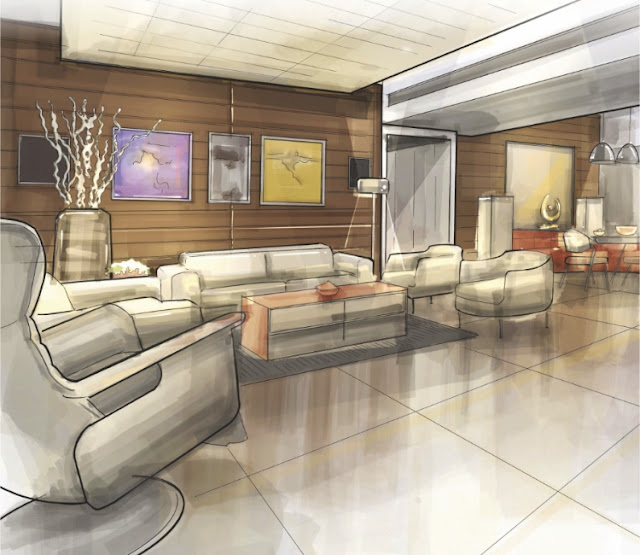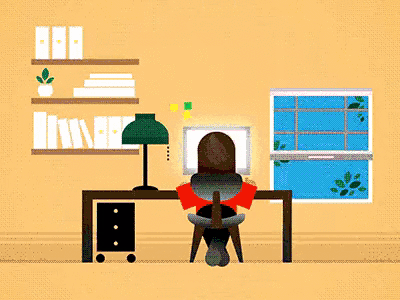Uniqueness of Environment Conscious Interior Design
The higher degree of professionalism required for the pursuance of Environment Conscious Practice requires robust nurturing and training. The tangible and intangible skill sets essential for the same require thorough understanding of the materials, their compositional properties, production process and life cycle. The responsible ECD practice provides solutions that are durable, less costly, innovative while ensuring higher endurance of quality and are found to be more efficient than the popular commercial practices.
It is best to hire a competent Environment Conscious Designer and entrust the responsibility of providing solutions that are enriching as well as prove repaying with efficient results for long term.
Eligibility Requirements for B.Voc (Interior Design) :

(For any details contact us)
Website: www.tsapmumbai.in
E-mail: tsap@thakureducation.org
Contact: 022-67308001/02
Whatsapp: +91-9321656571
‘…We at TSAP, Nurture Environment Conscious Architects and Designers with Zealous Ability & Skillsets essential for Exemplary Innovation & Creativity…’
UNIQUENESS OF ENVIRONMENT CONSCIOUS INTERIOR DESIGN
1. Concept of Minimal Design intervention:
The magic Mantra of ECD practice revolves around serve ‘More with Less’. The practice follows a minimalistic approach to design interventions, thereby ensuring ‘clutter free’ organization that is ‘pleasing to the eye’ that doesn’t conjure up space, thereby creating an aura of ‘spaciousness’.
Use of ‘Sleek lines’ that define the edges, easy to maintain user friendly surfaces and finishes, provide the cutting edge advantage over conventional practice.
The idea of minimization is not just restricted to choice of ‘materials or design patterns’, it also considers ‘energy efficiency’ by taking ‘conservation’, ‘durability’ and ‘output optimisation’ through ‘careful selection’ of ‘fixtures and fittings’ suitable for delivery of expected outcomes.
2. Empathetic and User Centric Solution
ECD practice is ‘Empathetic’ to the ‘User Centric Expectations’. Each project is unique and is the reflection of the Users needs and expectations. The design solution evolves around the ‘User Choice’ while simultaneously creating awareness, sensitivity and transparency. The involvement of User in the formative stage of design decision making, till the execution of the last detail, is an ‘enriching experience’ as a ‘participatory process’ ensuring personal touch to every detail in ECD practice.
The direct involvement of the stakeholder creates a partnership of taking ‘well-formed decisions’ by weighing several design options and selecting the optimal one.
An ‘Interdisciplinary Connection’ exists between ‘Nature and Humans’, ECD practice honors this valuable synergy by undertaking to uphold this symbiont relationship in all indoor or outdoor environments. The careful selection of ‘visual and tactile’ palettes are the key ingredient of ECD projects. The researches have proven several advantages of connecting with natural palettes in improving the overall well-being of inhabitants and ability to improve productivity. Use of ‘certain tactile and olfactory signals are able to provide sense of comfort and soothe the inhabitants’. An ECD project exhibits the bilateral unity by exploring the ‘material and finishing palettes’ as a comprehensive Environment Conscious design based thinking.
4. Scope for personalisation of ‘User space’ presence in the project
ECD practice values the choice of end user to adapt with the environment and provides flexibility to mould the surroundings over the period of time with personal taste and choices. The program ensures creating alcoves, niches, table tops, wall spaces, shelves, decks and consoles that permit the user to add, remove, edit objects that personalize the environment without actually impacting the overall ambience. The provision of scope to the ‘user choice and tastes’ adds the necessary playfulness and charm, while the overall dramatic settings of the décor continue to act as the foreground or backdrops to these events.
5. Introduction of Plants and Nature-scapes.
Indoor plants have been found to be ensuring indirect effect of improving task performance, overall health, and reducing the levels of stress of users. ECD projects promote the use of beneficial indoor plants that enhance the quality of life and well-being. They are found to be effective in removing negative energies, pollutants and thereby clearing up the interior spaces from toxins. The introduction of Indoor plants for a space and its care is a subject of specialised science to ensure desired quality output and results.
6. Use of Efficient Fittings and Fixtures
The various fittings and fixtures used for the faucets, showers, flushes and sprays have a significant effect on the quality of efficiency they can provide. A technically sound decision based on ‘performance based selection’ can provide ‘optimal efficiency’ while saving the resource. The simple decision of selecting the most appropriate water consuming fixture can safeguard the performance of the product lifetime. A plethora of fixtures are available in the market ranging from variety of type, capacities and outputs, however the selection and use must be done keeping the performance expectation and the quality of water source to achieve desired long term results.
7. Promotion and Enhancing Natural Light
The benefits of Direct and Indirect exposure to natural light are bountiful, with careful study of orientation, colour schemes, Window positions and provision of appropriate light shelves, ceiling reflectors, curtains, louvres and panes the benefits can be optimized. The understanding of day lighting and ways to improve its penetration by converting certain space dividers into transparent, semi-transparent, translucent membranes can also augment it and improve the overall efficiency while maintaining the visual privacy of different spaces. The ever changing quality of natural light during the various hours of the day, seasonal variations captured through patterns can increasingly improve the biological time response of the inhabitants.
8. Efficient utilization of Accents as artefacts in space.
Any piece of artefact or element of accent used for enhancement of spatial ambience can double its efficiency when it is able to deliver functional purposefulness. An ECD practice optimizes functional efficiency with aesthetic demeanor to give the most effective and user interactive element that makes its presence effective in daily living while acting as a piece of art, adding accentuation to the space.
9. Energy Efficient Electrical Fittings, Equipment’s and Fixtures
The Energy Efficient Equipment’s & Fixtures can bring down energy consumption by 75%. The Intensive market centric training helps inculcate virtues essential for selection of Energy Efficient performance based equipment’s by comparing technical brochures, specifications while shortlisting the desirables, out of the plethora of options available in the market. An ECD based Interior Design can remarkably improve energy efficiency. The environment control systems viz air-conditioning and heating systems available in the market are guzzlers of energy, careful selection of appropriate system, efficient planning and deployment can bring energy efficiency for optimal performance.
10. Attention on Acoustical ambience
The ambience of an indoor environment is often hindered by the acoustical performance of spaces especially in the urban environments wherein the outside noise becomes the largest part of nuisance. In an ECD practice every attention is given to seal the edges of the likely sources and introduction of design interventions that shall ensure efficient results.
The strategy of Absorption, Blocking and Covering (ABC) up of sounds works efficiently in achieving the desired results. The introduction of materials such as rugs, carpets, tapestry to absorb sounds, use of suitable materials and details for sound attenuation helps in curtailing unwanted sounds, while use of mild and soothing sound sources add to the quality of acoustical ambience.
11. Space and User Specific Lighting Design
In ECD practice, the Lighting loads are estimated and solutions provided to enhance the quality of lighting while ensuring optimal utilisation factor. It discourages the use of high energy consuming decorative lamps over responsible and efficient lighting systems, that are pleasing and designed to meet the purposes of functional efficiency while maintaining the objectives of aesthetic appeal. The selection of right colour rendition that compliments with day lighting and is gentle to the eyes are virtues undertaken.
The Location of lighting sources, distance from the user desk, age of the inhabitant, function of the space are the criteria’s detrimental in selection of the right lighting equipment and its placement. Use of adjustable lighting fixtures, dimmers, reflectors and ambient specific lighting schemes are some of the strategies for efficient planning.
12. Ergonomics and mixed use occupancies
The flexibility of Interior arrangement that facilitates optimal utilisation of spaces for variety of purposes is the need of the hour. A single space can be doubled to perform variety of functions without impairing the ambient performances. The professional and skillful ‘Space Optimization’ with appropriate use of innovative flexible ‘hardware & fixtures’ that enable ‘stackable’, ‘interlocking’ & ‘nestling’ solutions are hall marks of the minimisation with optimal benefits.
13. Reduce use of synthetic materials and avoid use of hazardous VOCs
The ECD practice discourages the use of synthetic materials loaded with chemicals or chemically treated surfaces to prefer use of natural finishes and materials. The Use of Volatile Organic Compounds in some of the Paints, Adhesives and finishes result in off gassing of harmful fumes that can be health hazardous.
A plethora of alternative and Eco Friendly materials is available in the market that can improve the efficiency and performance of Interior Spaces. In ECD the use of water based paints, natural finishes and materials that are healthy for the occupants are shortlisted and preferred.
14. Consciousness about material procurement
The ECD practice assumes responsibility towards, planet, humanity, nation and promotion of local art communities and production. The sources of materials are identified for their eco friendly procurement while purchasing them and utilizing in various projects. Every care is taken to ensure the materials are the procured from the most reliable resources that ensure environment efficient practices and are suitable for the inhabitants.
The practice of Environment Conscious Design is Responsible Innovative, Creative and Research based that ensures Quality Assurance while taking care of the Stakeholder expectations and regards for the Global Environment.

















Creating Environment Conscious Designs is need of a hour. The Blog highlights very crucial aspects of the same & inspires young designers to lead the way towards creating meaningful & responsible designs in future.
ReplyDelete